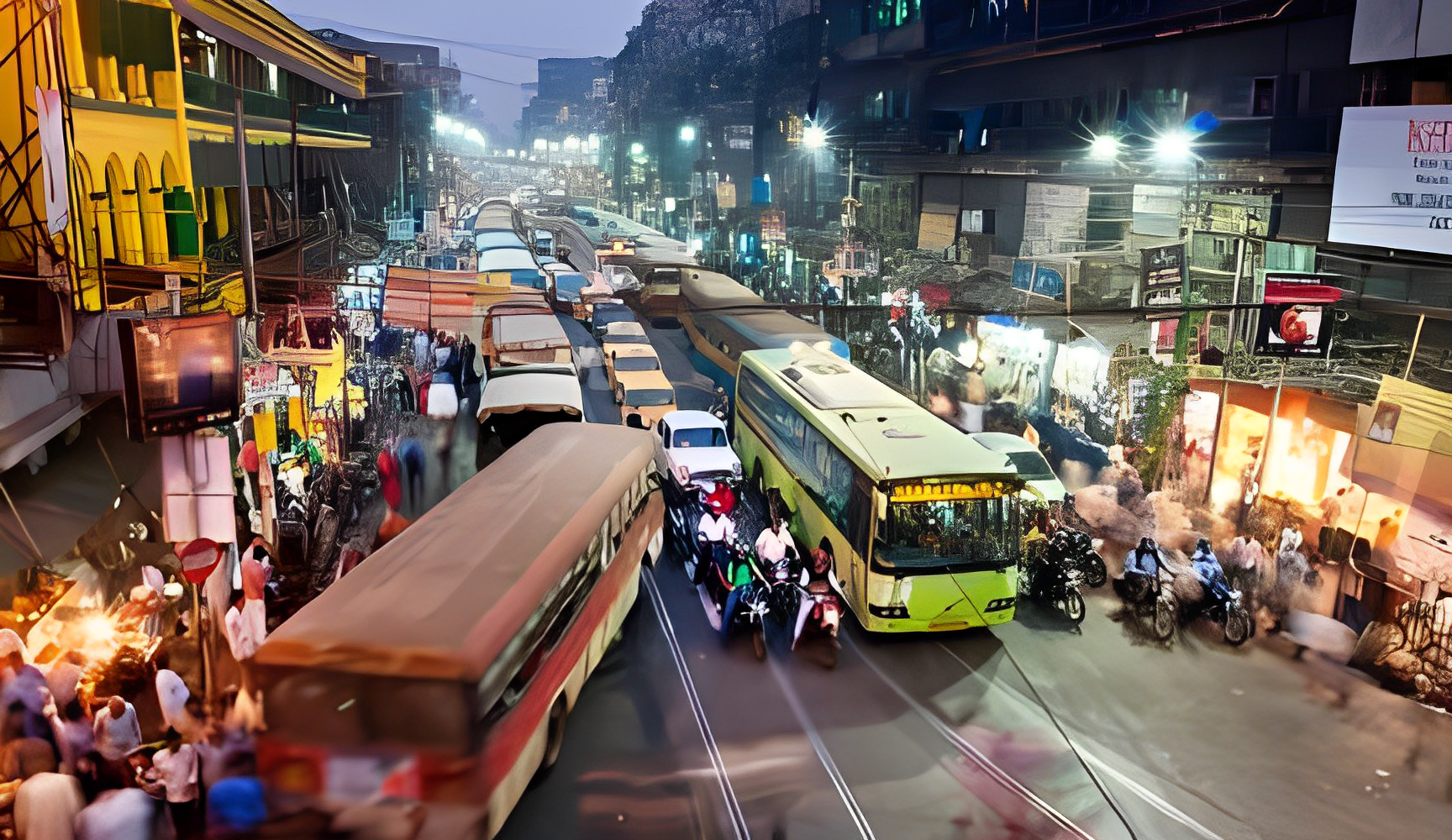Mumbai, the “City of Dreams,” pulsates with an unparalleled energy. A melting pot of cultures, languages, and aspirations, it’s also India’s financial powerhouse and the world’s 12th most populous city. But Mumbai’s population is expected to surge even further in the coming years, posing exciting opportunities and significant challenges.
Mumbai Population: Current Estimates and Growth Projections
As of 2023, Mumbai’s population is estimated to be around 22.7 million, residing within the city limits (Greater Mumbai). This figure, however, excludes the vast Mumbai Metropolitan Region (MMR), which encompasses neighboring Navi Mumbai, Thane, and other districts. The total Mumbai population, including the MMR, stands at a staggering 29.1 million, making it one of the largest urban agglomerations in the world.
Mumbai’s population has been steadily growing for decades, fueled by rural-urban migration, economic opportunities, and a vibrant cultural scene. This growth is projected to continue, with estimates suggesting Mumbai’s population could reach 35 million by 2030 and exceed 40 million by 2050.
Factors Driving Mumbai Population Growth
Several factors are contributing to Mumbai population boom:
- Economic Hub: Mumbai houses prominent financial institutions, major corporations, and a thriving startup ecosystem, attracting job seekers from across India.
- Educational Opportunities: The city boasts renowned universities, colleges, and research institutions, drawing students and academics.
- Improved Infrastructure: Development projects like the Mumbai Metro and upcoming coastal road aim to improve connectivity and accessibility, making the city more attractive.
- Healthcare Facilities: Mumbai offers some of India’s best hospitals and medical centers, catering to an influx of patients seeking advanced healthcare.
Challenges of a Growing Mumbai Population
While Mumbai population growth presents economic potential, it also raises concerns:
- Housing Shortage: The rapid increase in Mumbai’s population strains the city’s housing infrastructure, leading to slums and inadequate living conditions.
- Traffic Congestion: With more people and vehicles, traffic congestion is a major challenge, impacting commutes and productivity.
- Strain on Resources: Increasing Mumbai’s population puts pressure on water, sanitation, and waste management systems, requiring significant investment in infrastructure upgrades.
- Pollution and Environmental Degradation: Rising population density contributes to air and water pollution, posing health risks and environmental concerns.
Preparing for Mumbai’s Megacity Future
To manage Mumbai population growth effectively, proactive measures are crucial:
- Sustainable Urban Development: Investing in smart city initiatives, public transportation, and green spaces can enhance livability and reduce environmental impact.
- Affordable Housing Solutions: Developing affordable housing units and promoting vertical development can address the housing shortage.
- Employment Generation: Diversifying the economy and fostering skill development can generate sustainable jobs for the growing population.
- Efficient Resource Management: Optimizing water and energy usage, improving waste management systems, and promoting recycling are essential for sustainability.
Mumbai’s future as a megacity will depend on its ability to address these challenges effectively. By embracing sustainable practices, investing in infrastructure, and fostering inclusive growth, Mumbai can leverage its growing population to become a thriving and livable metropolis for generations to come.
Mumbai’s Megacity Future: Beyond Numbers, Unveiling the Human Tapestry
Mumbai population surge isn’t just a matter of statistics; it’s a human tapestry woven from diverse threads, each with its own story. The bustling markets pulsate with dreams of young entrepreneurs, the cramped chawls echo with the laughter of families clinging to hope, and the towering skyscrapers house ambition etched in glass and steel.
Amidst the megacity’s sprawl, communities forge resilience. The dabbawalas weave a silent symphony of lunchboxes, delivering sustenance and connection across the city. Street vendors, their carts painted vibrant hues, weave flavors and aromas that tantalize and bind. Artists and musicians, their voices rising above the honking chaos, weave tales of struggle and triumphs, keeping the city’s spirit alive.
But the tapestry also bears the brunt of the megacity’s challenges. Children navigate congested streets, their dreams jostling with exhaust fumes. Women battle for space on packed trains, their aspirations intertwined with anxieties for safety. Elders, their faces etched with the city’s history, yearn for green spaces and quiet corners.
The megacity’s future hinges not just on infrastructure and policies, but on recognizing these stories, these struggles, and these dreams. Can Mumbai weave a future where affordable housing isn’t just concrete blocks, but a haven for families to thrive? Can its education system nurture not just skills, but the vibrant diversity of its youth? Can its healthcare embrace not just technology, but the holistic well-being of its communities?
The answers lie in building an inclusive megacity, one that celebrates its multicultural fabric. Imagine public spaces teeming not just with cars, but with open plazas for art, music, and storytelling. Envision schools where multiple languages dance on the breeze, and each child finds their voice. Dream of healthcare woven into the fabric of every neighborhood, accessible and personalized.
Mumbai’s megacity future isn’t a preordained script; it’s a blank canvas waiting to be painted. With mindful brushstrokes, we can create a city where progress doesn’t erase the human stories, but amplifies them. A city where dreams find fertile ground, not just in skyscrapers, but in the hearts of its people.
This is the true challenge of Mumbai’s megacity future – not just managing numbers, but weaving a symphony of human potential, where every thread, every story, finds its place in the vibrant tapestry of the city’s soul.
Sources: Mumbai Population
- World Urbanization Prospects 2022, United Nations Department of Economic and Social Affairs
- Maharashtra Economic Survey 2022-23, Government of Maharashtra
- Mumbai Master Plan 2047, Municipal Corporation of Greater Mumbai




